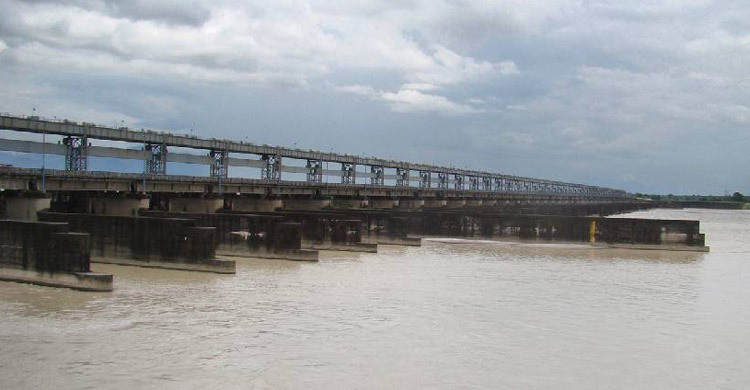India releases water from Gajoldoba without notice

India has released approximately 11,000 cumecs of water from the Gajoldoba Dam on upstream Teesta in two phases without any notice triggering flood risks in northern districts of Bangladesh.
Alongside onrush of upstream water, heavy rainfall in Bangladesh has already caused the Teesta River's water level to rise and it is now flowing above danger mark at several points.
Bangladesh’s Flood Forecasting and Warning Center said they had no prior notice of this large water release from Gajoldoba, reprts BBC Bangla Service.
A "cumec" measures water flow in cubic meters per second, with 1 cumec equaling 35.31 cusecs, or roughly 28.31 liters per second.
Sardar Uday Raihan, executive engineer at the Flood Forecasting and Warning Center, stated that Bangladesh was unaware of the significant water release from India.
Reports indicate that Domhani, in West Bengal’s Jalpaiguri district, saw a water flow of 2,267 cumecs on Saturday, which is considered normal for this time of year. However, the sudden release of such a large volume of water poses flood risks for Bangladesh.
The Teesta River, which originates in the Himalayas and flows through Sikkim, Darjeeling, and Jalpaiguri in India before entering Bangladesh, has barrages on both sides. The Teesta Barrage in Bangladesh’s Nilphamari controls water flow in the region. In India, several dams are built along the river, including the Gajoldoba Dam in Jalpaiguri.
According to the Gajoldoba Dam’s control room, about 6,000 cumecs of water were released at 12:30 p.m. on Friday, followed by an additional 4,700 cumecs. Typically, some sluice gates of the dam remain open throughout the year, but when water levels exceed the dam’s capacity, more gates are opened to release the excess water.
India’s West Bengal State Irrigation Department confirmed the water release, attributing it to heavy rainfall in India’s Sikkim and Kalimpong districts, as well as continuous rainfall in Bangladesh. The excess water in the Teesta River surpassed the danger level, forcing India to open additional sluice gates.
A red alert was issued for areas along the river from Mekhligonj in Cooch Behar district to the Bangladesh border. The district administrations of Jalpaiguri and Cooch Behar have begun evacuating riverside residents as the water level rises. The Indian Meteorological Department reported heavy rainfall, with Kalimpong receiving 130 mm and Jalpaiguri 163 mm of rain in 24 hours.
Bangladesh authorities were initially unaware of the water release. Sardar Uday Raihan explained that from May to January, during the monsoon season, the dam gates are typically open to accommodate high water flow, and no additional warnings are issued for routine releases. However, prior notice is generally required when releasing water for hydropower generation due to the higher water capacity of dams compared to barrages.
Although Bangladesh knew about the normal 2,267 cumecs flow, if India indeed released around 11,000 cumecs, significant flooding would be expected soon in Bangladesh. The situation is being closely monitored as water levels continue to rise.

